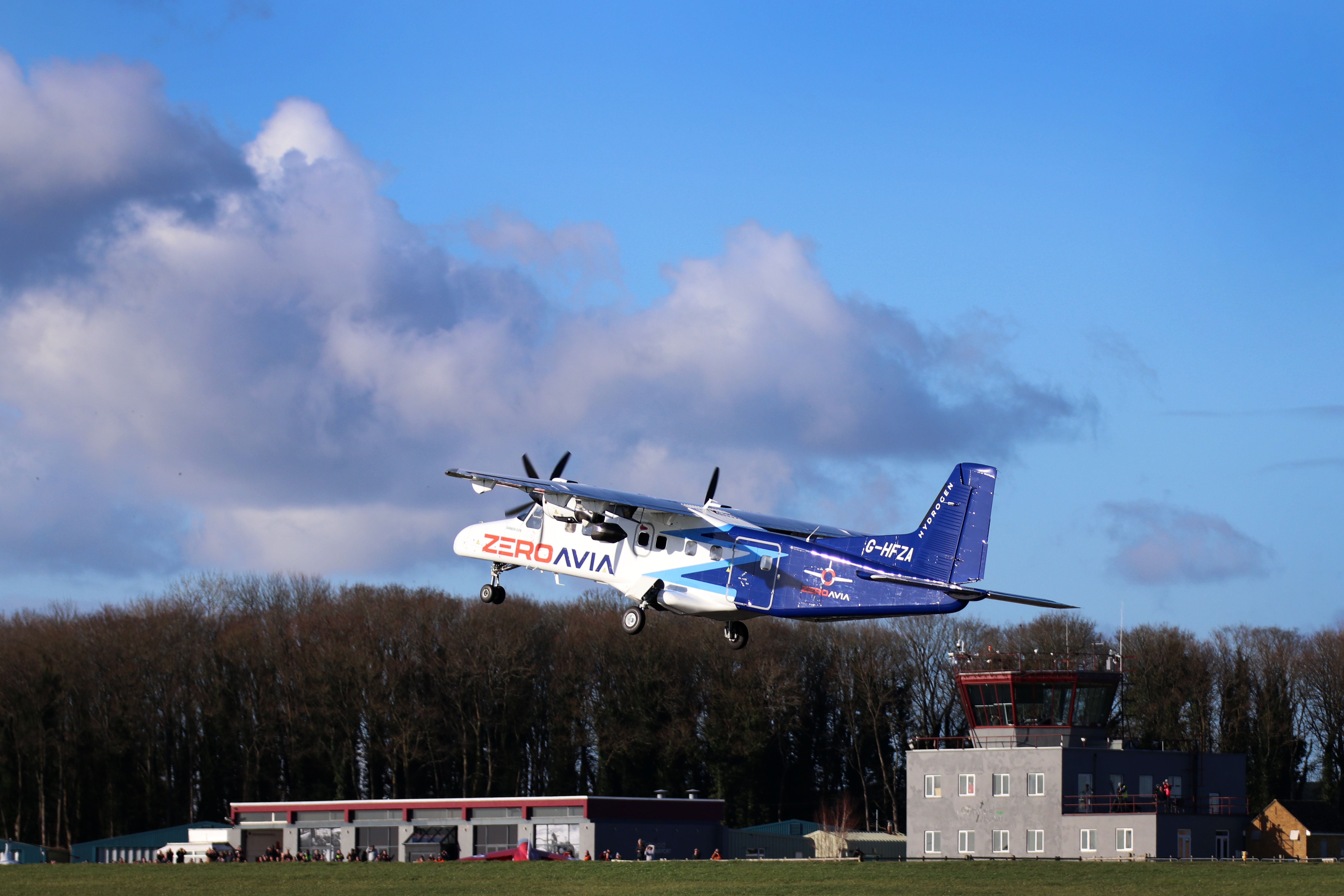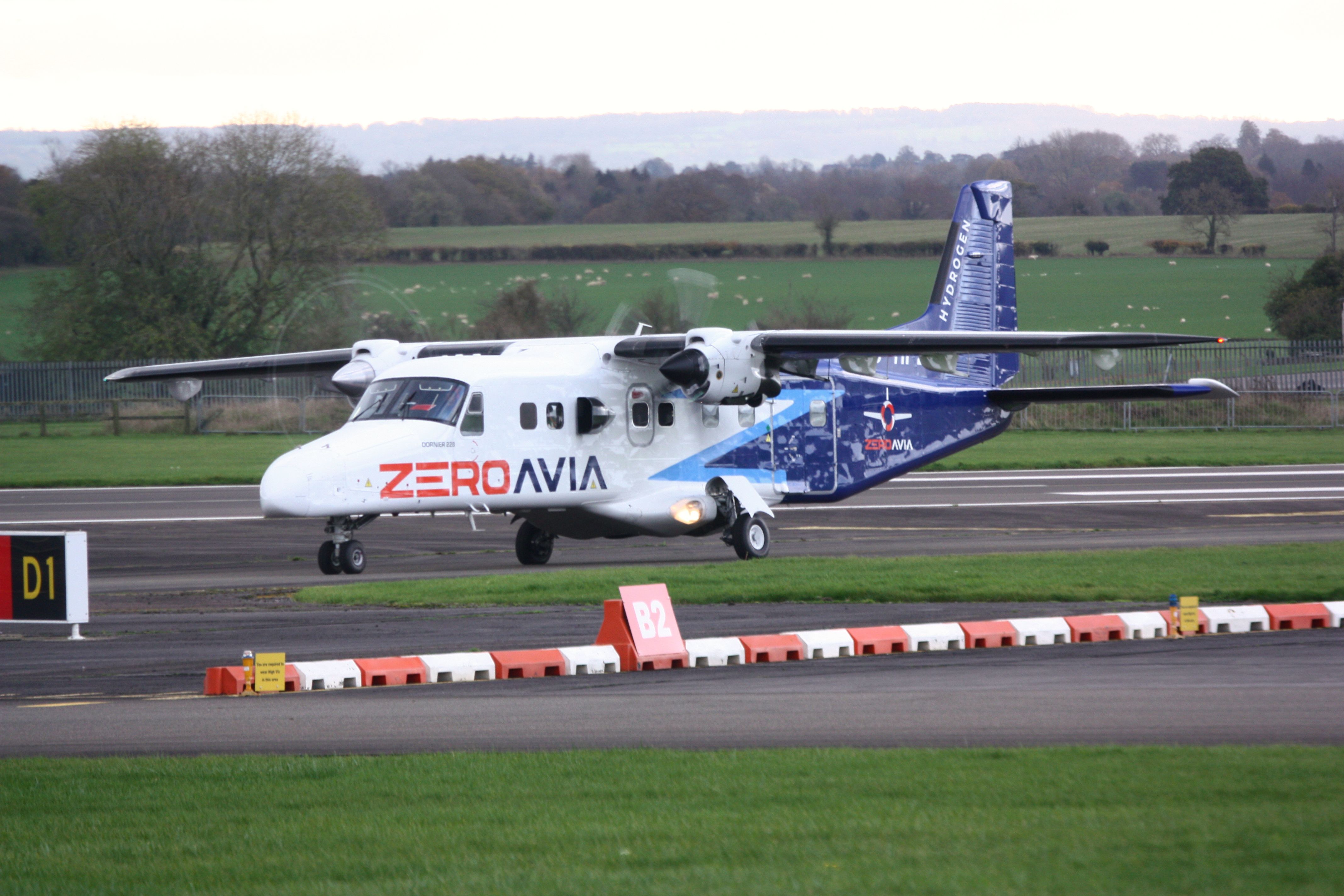In a major milestone for the aviation industry and, indeed, potentially the planet, ZeroAvia announced on Thursday the maiden flight of its 19-seater Dornier 228 testbed aircraft, retrofitted with one of the company's hydrogen fuel cell powertrains. The flight took place at the company's R&D facilities at Cotswold Airport in Gloucestershire, UK. At 13:35 GMT, the Dornier 228 completed taxi, take-off, and a full pattern circuit, during which it reached an altitude of 2,000 feet before landing back on the runway.A ZeroAvia hydrogen fuel cell powertrain was fitted onto the Dornier 228's left wing, and it was combined with the power of a Honeywell TPE-331 on the right-hand side. It is the heaviest and largest aircraft ever flown with a hydrogen-electric powertrain, today with a take-off weight of 5,650 kg. It was, according to reports from the team behind the flight, a very emotional and celebratory moment for everyone involved.Gabriel Teofili, ZeroAvia's Head of Aircraft Integration and Testing, commented,
"This milestone is not at the end of a journey, but it's the beginning. The beginning of the fight test campaign is the beginning of a moment where we are going to learn and to accelerate the next phase, which is the entering into service and the commercialization of the same engine in the same type of aircraft."
The company stated that all systems performed as expected. Now, it awaits a test flight campaign that will consist of between 10 and 20 flights, several of which will operate only on hydrogen. However, at the moment, there is no plan to fit two hydrogen-electric engines on the plane during the current test campaign, although this is, of course, the intended configuration for commercially operating aircraft. The aim is to have commercial flights using hydrogen fuel cells by 2025.
Zero-emission flight a few years away
Val Miftakhov, ZeroAvia's Founder and CEO of ZeroAvia, commented on what can only be referred to as a historic moment for zero-emission aviation,
"This is a maior moment, not just for ZeroAvia, but for the aviation industry as a whole, as it shows that true zero-emission commercial flight is only a few years away. The first flight of our 19-seat aircraft shows just how scalable our technology is and highlights the rapid progress of zero-emission propulsion. This is only the beginning - we are building the future of sustainable, zero climate impact aviation.
"Our approach is the best solution to accelerate clean aviation at scale. Congratulations to everyone on our team and all of our partners and stakeholders for the collective effort that brought us to this monumental day in history."
In 14 months, the company has transitioned the technology from a six-seat Piper M-class to powering the 19-seat Dornier aircraft. In the testbed configuration, the hydrogen tanks and fuel cell power generation systems were housed inside the cabin at the expense of passenger seats. It is unclear exactly how this will be solved, but for commercial operations, ZeroAvia will move tanks and systems outside the fuselage.
UK looking to secure green aviation jobs
The flight test campaign is part of the HiFlyer II program, which is, in turn, part of the UK's broader Aerospace Technology Institute funding program to deliver a 600kW hydrogen powertrain for 9-19 seater aircraft worldwide. Secretary of State for Business Grant Shapps also commented on Thursday's flight and what it means for the domestic sustainable aviation agenda,
"Today's flight is a hugely exciting vision of the future - guilt-free flying and a big step forward for zero-emission air travel. It also demonstrates how government funding for projects like these is translating into net zero growth.
"The UK is a world leader in green aviation technology, and the global shift to cleaner forms of flight represents a huge opportunity to secure growth and jobs for our country. That's why we are backing businesses who share our ambitions, reaping the benefits of green technology and growing the thousands of new, skilled jobs that come with it."
Last year, ZeroAvia launched the search for its manufacturing site. With a pre-order book for about 1,500 powertrains, capacity is a priority, and a decision is expected to be forthcoming within the next few months, Val Miftakhov stated during a conversation with journalists.
Want to know more about sustainability in aviation?
What do you make of today's hydrogen-electric flight and ZeroAvia's trajectory to commercialization? Leave a comment below and share your thoughts on the future of aviation.


